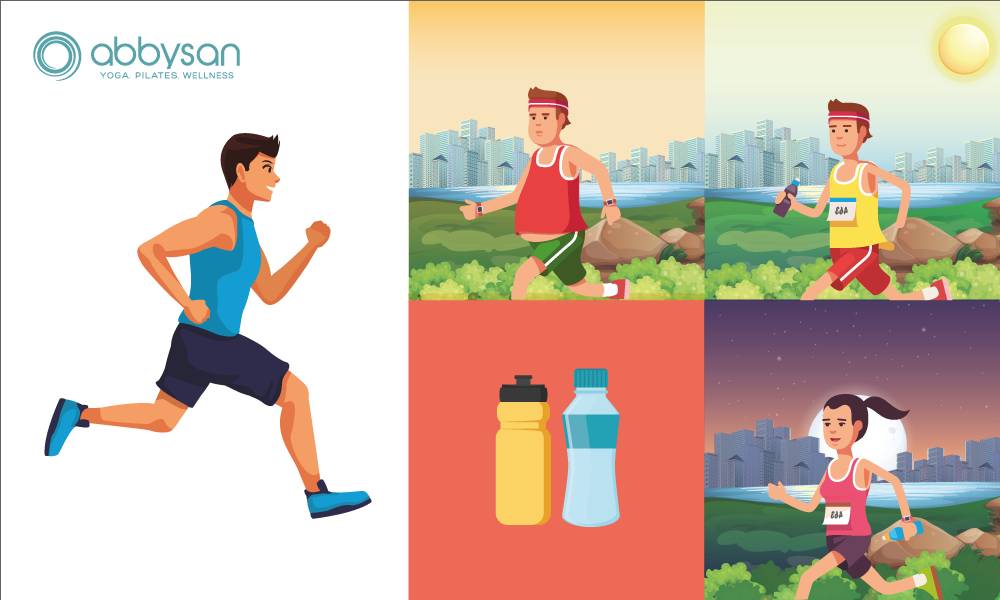If the cause of the back pain is still a mystery to you; The best possibility to solve the issue is to identify what causes it. Let’s take a look at some likely suspects.
Continue readingTOP 3 Health Mega Trends In 2022
We predict the top three health mega-trends in 2022 will focus on making positive shifts to our lifestyle and improving our Deep Health and not limited to only diet and fitness.
Continue readingGetting Set for Distance Running
Distance Running and The Olympics
Running traced back to the old days, in fact as humans, we run in most of our everyday life whether for a long distance or a short one. However, in the world of sports, the long-distance race is part of the oldest track event Included in the Ancient Olympics. Any running game where the runner covers at least two kilometers is tagged as distance running. Endurance, stamina, and strength are of essential value in this competition. During the race, competitors must maintain their energies to run effortlessly towards the end of a long race.
Only males were allowed in the 19th century to compete in long-distance running in the Olympics game, until 1928 when a woman was allowed to compete in the Summer Olympics. However, women were only allowed to participate in the 800-meters distance race.
1500, 3000, and 10000-meter event were instituted in 1972, 1984, and 1988 respectively, although, the 5000-meter race replaced the 3000-meter run in 1996.
All Olympic race rules and regulations (both it’s drafting and amendment) are made by The International Association of Athletics Federations (IAAF). Such standards include
- Olympic distance runners are to maintain their lane from start to finish.
- In longer distance races (1500 meters and above), runners are divided into two batches.
- The first batch stays across the inner half of the track and goes first, while the second batch remains on the outer track until the first batch finishes the first turn.
For a country to compete in Olympic distance running events, the runner can complete the race within the Olympic qualifying time. Only three representatives from a country may compete for every race. Olympic distance events have1 to 2 rounds of preliminary runs, in the finals, a total of 8 runners take part in the 800-meter run, 12 in 1500meter, 15 in the 5000meter, and the numbers of finalists for 10000 meters vary about the number of entrants. The race comes to an end when an athlete’s torso touches the finish line.
One of the persons who shook the Olympic marathon world and became the most popular in the marathon world is Deena Kastor, an American and a distance events champion. She holds both national and world records in numerous marathon (including the half-marathon events), and a bronze medal in the women’s division of distance running Olympics in 2004. In 2006, she went further to set a new American marathon record of 2:19:36, which has been the highest noted since the inclusion in the Olympic track, in 1984. Currently, she and Dathan Ritzenhe in (her fellow American) are among the 2008World’sTop Olympic Contenders.
Distance running requires the right combination of talent, track and field skills, ability, speed, strength, flexibility, and stamina. Countries that bring their best running athletes to participant tend to have a better shot not just at winning, but also at setting a record.
In Olympic, distance running tends to dominate the scene. Therefore, the Pressure on runners and marathoners is super intense.
The Human Powerhouse
“Your Core is probably the only structure that does not require much training.”
Core strength is not about developing skeletal or muscular armoring and it is not about over developing one specific group of muscles. Instead, core strength involves developing resiliency.
It becomes rigid when you need to lift something substantial, it becomes loose when you are tired, fatigued or depressed, it becomes responsive when you are playing sports or doing other activities such as dancing, and it becomes stable and strong to maintain a good posture both durable and dynamic.
The entire core system is like a tennis ball. As long as it’s compact, it will bounce, but the moment it’s cut the bounce reduces and eventually stops.
The core is your powerhouse. It can still be active and working despite of all the direct or indirect damage caused by the body structure (Flat feet, lumbar lordosis, thoracic kyphosis, scoliosis, stiffness of the spine for whatever reason), adaptive positioning and movement dysfunction, pregnancy, childbirth, obesity, sedentary lifestyle, sexual intercourse, physical trauma, post-surgery and old age just to name a few.
The question is what the first step towards Core Recovery is?
Many of you agree when you are depressed, you tend to give up most of the activities you slouch and loose your ideal posture. Realigning your position is the first step to a faster core recovery. This sounds easy but how do you realign your perfect posture and how long will it take?
Your posture is an Internal job; it’s not just physical but also psychological. To realign your posture you need first to find the bunch of muscles that are causing this postural malfunctioning and changes. Creating balance in their length and strength relationship is the way to start. This may not take too long, but the actual results can only be seen after this training of fixing their relationship has been done consistently and for a reasonably long time. Ideally, as much time as it has taken to malfunctioning.
Most people already give up halfway. Or when the pain is reduced, they believe the problem is fixed. That’s not true. It’s like taking the antibiotics you must finish the doses; otherwise, you will develop the sensitivity towards it, and it won’t work next time you decide that antibiotic. You will need a much higher dosage that means much harder work for your liver to process & expel it and detoxify your body.
Same applies when fixing your core. When you stop it becomes sensitive to the methods, you used to fix it, and then ultimately you have to try something else to fix it. That requires learning new ways new techniques all over again and the time and effort that it takes yet. This process goes on and on.
The two best methods to keep it all aligned and remain it that way is to practice Yoga and Pilates under supervision (one on one) and also practice under the experienced masters who have the extensive knowledge of Human body and movement science.
See below the six specialized classes we offer to fix your core or book a private session, and we can fix it from the inside out without going for any invasive or fat-sucking procedure.
- Postnatal Recovery
- Yoga Core
- Back Care Yoga
- Backstretch vinyasa
- Spine Clinic
- Ab Blast Pilates
If you are not being able to visit our physical location, Purchase the ten series pilates video and begin strengthening your core as little as in 30 Days.
—-
If you are a new or busy mom?
Or Are you recovering from surgery in your back or abdomen?
Or want to regain your strength after chemotherapy?
Or you are looking for an alternative way to manage chronic pains and boost your energy?
But you either can’t make it to the studio that often or can’t afford the cost of private training or BOTH.
Then, THIS IS FOR YOU.
Sign up for the eight weeks customized online core repair program today and begin to feel energetic and pain-free again.




